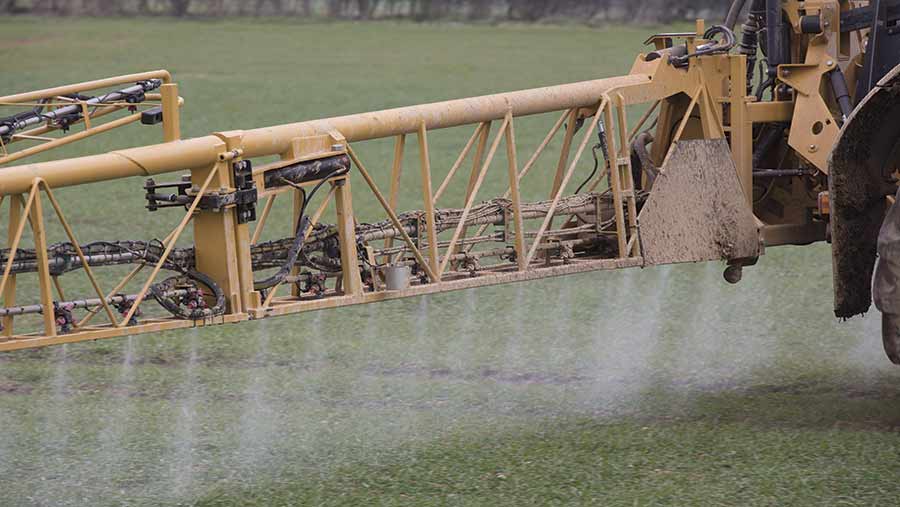Key herbicide label changes to look out for this spring
 © Tim Scrivener
© Tim Scrivener A welcome herbicide approval for spring wheat and an extra option for post-emergence applications in sugar beet are among the label changes for herbicides this spring.
Beet growers are also reminded of amended application limits for a popular product, following changes to its label.
Liberator for spring wheat
Bayer’s mainstay of grassweed control in winter wheat and winter barley, Liberator, now has full label approval for application in spring wheat crops.
See also: Potato growers may see alternative nematicide by 2019
Grassweed challenges, particularly blackgrass, have increased interest in spring crops over recent years as growers look to get on top of high populations with a larger window for pre-crop control.
With few fully approved herbicide options available in spring cereals, Bayer responded to increased demand for residual products in spring cereals by having spring wheat added to the Liberator label.
Growers were previously able to use the product in the crop, but required an Extension of Authorisation for Minor Use (Eamu).
The new label permits one application of 0.3 litres/ha before the crop reaches growth stage 14. Farms with old-label Liberator left in the shed will still be able to use it on spring wheat next year, provided they print a copy of the new label, which will be available on the Bayer website soon.
This registration does not apply to Liberator use in spring barley – it can still be used, but growers must have a copy of the Eamu.
New sugar beet product
An alternative sulfonylurea herbicide product will be available for beet growers this spring for the control of a range of broad-leaved weeds.
Manufactured by UPL, Shiro contains triflusulfuron-methyl and offers an alternative to Dupont’s Debut, which is often included in post-emergence tank mixes to control brassica weeds, cleavers and mayweeds.
In independent trials, it has performed equally to other triflusulfuron-methyl-containing products, with strong control of cleavers and volunteer oilseed rape.
Rate reminder
The beet area is set to rise this spring and some growers returning to the crop after a period away may be unfamiliar with changes to products they applied in the past.
Last season an old approval for Adama’s pre- and post-emergence product Goltix Flowable (metamitron) expired and has been replaced by Goltix 70 SC, which has lower permissible application rates than its predecessor.
Existing, returning or new growers need to be careful not to exceed these limits, with maximum application rate per treatment dropping from 5 litres/ha to 2 litres/ha and maximum total application rate down from 15 litres/ha to 5 litres/ha.
Round-up of spring wheat and barley residual herbicide options
Liberator (flufenacet + diflufenican
- Spring wheat – one treatment up to GS13
- Eamu for spring barley – one treatment up to GS23
- Controls a range of grass and broad-leaved weeds
PicoPro (pendimethalin + picolinafen)
- Spring wheat and spring barley
- One treatment pre- or post-emergence up to GS30
- Lower rate for post-emergence use – 2 litres/ha instead of 3 litres/ha
- Controls annual meadowgrass and a range of broad-leaved weeds
Crystal (flufenacet + pendimethalin)
- Eamu for spring barley – one treatment up to GS22
- No approval for spring wheat
- Controls a range of grass and broad-leaved weeds
Tower (chlorotoluron + diflufenican + pendimethalin)
- Spring wheat and spring barley – one treatment up to GS29
- Controls annual meadowgrass and a range of broad-leaved weeds
Pesticide watch
Farmers Weekly is working with Gatekeeper agronomists to highlight key pesticide rule changes and the potential implications, keeping you on the right side of the law and aiding on-farm record keeping.
Sentinel is a decision support tool linked to Gatekeeper crop management software, a programme that helps arable farmers with record-keeping and legislation issues.

